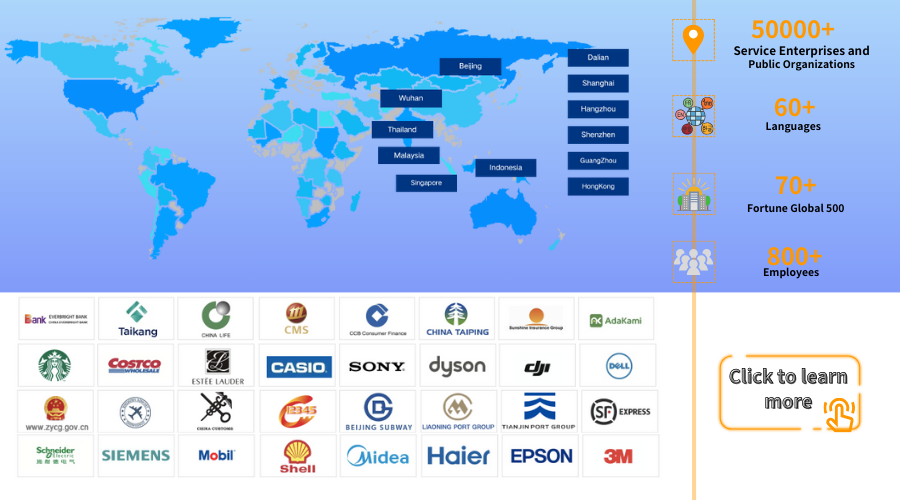The 8 Best Customer Service Channels and How to Choose Them
Article Summary:While customer service used to be almost exclusively offered via call centers, it's grown over the years, and it's now offered across a variety of platforms and channels.
Table of contents for this article
While customer service used to be almost exclusively offered via call centers, it's grown over the years, and it's now offered across a variety of platforms and channels.
Each customer service channel meets customers’ needs in different ways, so when choosing which channels you'll offer support on, it's important to consider how your customers currently communicate with you and where there might be communication holes you’d like to fill with one or more new channels.
8 popular customer service channels
01 Phone Calls
Despite the rise of digital channels, the telephone remains one of the most effective ways for customers to get individualized assistance. While phone calls require live agent availability, they allow for two-way, real-time dialogue that helps resolve complex issues quickly. As such, phone support should not be abandoned altogether. That said, businesses with large call volumes may want to supplement phone lines with other self-service options to reduce wait times. Overall, phone support is best for businesses with complex products/services or an older customer base.
02 Live Chat
Live chat has emerged as a top alternative to phone calls due to its synchronous nature and ease of use. Customers can easily get answers to basic questions without waiting on hold. For businesses, live chat requires fewer resources than phone support and allows agents to handle multiple inquiries simultaneously. Live chat works well for businesses with a good volume of simple questions from digital-first customers. Integrating chat features directly into a company's website or app provides an always-on customer service option.
03 Email
Though asynchronous, email remains a core customer service channel due to its universality. Customers appreciate having the option to explain problems or questions in detail via email, while businesses benefit from having written records of correspondence. While response times may be slower than live channels, email allows for off-hours support. To provide the best service, businesses should aim to respond to emails within 24 hours and use email templates to ensure consistency. Overall, email is essential for documenting support histories.
04 Self-Service Knowledge Base
A robust self-service knowledge base featuring FAQs and tutorial articles can resolve a high volume of common issues without agent involvement. Customers value being able to find answers on their own time and prefer self-service to waiting. For businesses, a knowledge base reduces labor costs associated with repetitive questions. Natural language search capabilities further improve the customer experience. To maximize impact, the knowledge base should be regularly updated based on top customer inquiries.
05 Social Media
Major social networks like Facebook, Twitter, Instagram, etc. have become mainstream customer service channels, especially for consumer brands. Customers turn to social media to ask public questions, report issues, and interact with brands in real-time. While not ideal for sensitive inquiries, social media engagement builds brand awareness when handled properly. Businesses should actively monitor key brand pages and respond to customers promptly with helpful, polite messages. Social support works well for casual, non-urgent customer interactions.
06 Co-Browsing & Screen Sharing
For issues that are difficult to explain verbally or through text, co-browsing and screen sharing tools allow customers to give live, visual demonstrations of problems to agents. This makes troubleshooting software, device, and technical glitches much more efficient. Customers appreciate the personal touch of these collaborative channels. While requiring specialized agent training, co-browsing is well-suited for digital/technical businesses with complex products or services. Integration with existing support platforms streamlines the experience.
07 Community Forums & User Groups
Online user communities and forums give customers a place to help each other and get answers from product experts. Customers value the peer-to-peer support and appreciate having a dedicated space for in-depth discussions. For businesses, community moderation is less resource-intensive than one-on-one support. However, active community management is still needed to ensure accuracy and provide official responses. Overall, forums work well as a supplemental channel for technical or niche products with engaged user bases.
08 Mobile Apps
As mobile device ownership continues to rise, support through dedicated apps directly on a customer's device is gaining prominence. Customers appreciate the convenience of getting quick help from their phone. For businesses, apps facilitate always-on customer service and allow for interactive features like push notifications. While development requires investment, apps are especially suitable for industries where customers spend significant time on mobile like retail, food delivery, and travel. Integration with other channels creates a seamless omnichannel experience.
Pick the channels that work for you and your customers
Customer service channels are not a one-size-fits-all kind of addition to your customer service strategy. Depending on what type of customer you have, your product, and even the kind of support your team offers, you may choose different channels over others.
Udesk is an omnichannel customer service platform that allows businesses to provide support across multiple communication channels. The platform enables customer support teams to engage customers through popular messaging apps, video calls, web chat, email, and more, all from a single unified agent interface. Agents can view customer histories and quickly switch between conversations on different channels.
Udesk also offers tools for customer self-service with a knowledge base, virtual assistants, and a service bot. Its analytics capabilities provide support managers with insights into key metrics like response times, issue resolutions, and customer satisfaction levels.
With Udesk, companies can deliver a seamless customer experience regardless of how customers choose to get in touch. It aims to make multichannel support effortless for agents while keeping customers happy with fast, personalized assistance on their preferred channels.
》》Take our Omnichannel Chat for a spin—for free—to see how it can work for your business.
The article is original by Udesk, and when reprinted, the source must be indicated:https://www.udeskglobal.com/blog/the-8-best-customer-service-channels-and-how-to-choose-them.html
All-in-One Chat PlatformOmnichannelOmnichannel ChatOmnichannel Customer Support

 Customer Service& Support Blog
Customer Service& Support Blog



